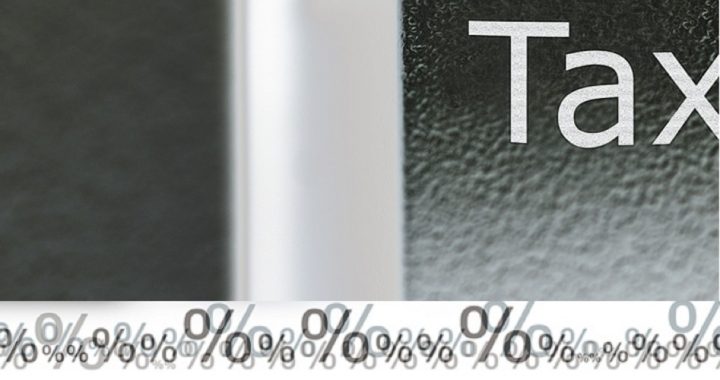
Tax Freedom Day — the first day of the year in which Americans as a whole have theoretically earned enough income to pay for all their taxes — arrives this year on April 24 according to a report from the Tax Foundation, which has calculated Tax Freedom Day for the United States since 1971.
In a press release issued on March 30, Kyle Pomerleau, an economist for the Tax Foundation’s Center for Federal Tax Policy, noted that this year “Americans will pay $3.3 trillion in federal taxes and $1.5 trillion in state and local taxes, for a total bill of more than $4.8 trillion, or 31 percent of the nation’s income.”
That is more than Americans will collectively spend on food, clothing, and housing combined, observes the Tax Foundation. Pomerleau observed:
Tax Freedom Day gives us a vivid representation of how much we pay for the goods and services provided by governments at all levels.
Arguments can be made that the tax bill is too high or too low, but in order to have an honest discussion, it’s important for taxpayers to understand cost of government. Tax Freedom Day helps people relate to that cost.
The foundation explains the formula it uses to arrive at Tax Freedom Day. It takes all federal, state, and local taxes and divides them by the nation’s total income, using data listed as national income according to the Department of Commerce’s Bureau of Economic Analysis (BEA). It then determines how long residents of each state would take to pay their taxes if they were all paid at the beginning of the year. The date varies by state, since the foundation considers taxes borne by residents of each state, whether paid to the federal government, their own state or local governments, or governments of other states. (Residents of New Jersey and Connecticut who work in New York City, for example, must pay New York state income tax and New York City income tax on their earnings, as well as very large property taxes back home. That may explain why residents of those two states have the latest Tax Freedom Day — May 13 — in the nation.)
It takes Americans, on average, 114 days to pay for their taxes.
While New Jersey, Connecticut, and New York (May 8) have the latest Tax Freedom days, the day has already arrived for residents of Louisiana (April 2) and Mississippi (April 4), with South Dakota’s falling on April 8.
An article in the New Orleans Times-Picayune on April 2 celebrated Louisiana’s accomplishment in reaching Tax Freedom Day earlier than any other state. The writer, Renita D. Young, quoted LSU economics professor Dr. Loren C. Scott, who asserted that the fact that Louisiana has already reached its tax freedom threshold is a reflection of Governor Bobby Jindal’s pledge not to raise taxes while he’s in office. “Macroeconomics books will tell you that if you want economic growth, you lower taxes and not raise taxes, which is one of the reasons why the U.S. economy is growing slowly right now,” said Scott.
Louisiana’s accomplishment in reaching an early Tax Freedom Day, because of its relatively low taxes, reveals another important economic truth, added Scott: “If you are more into the issue of income redistribution between the rich and the poor (the way you achieve that is by raising taxes on the rich) then this is not good news.”
Though Scott did not mention the origins of using the income tax to redistribute wealth, he could have noted that number two of the 10 measures proposed to achieve communism listed in the Communist Manifesto is “a heavy progressive or graduated income tax.”
The tax burden has increased dramatically over the last century, particularly since the 16th Amendment, which allowed the federal income tax, was ratified in 1913. One of the biggest jumps was from 1910 to 1920, when Americans’ tax burden increased from five percent to 12 percent of their income and Tax Freedom Day advanced from January 19 to February 13. Back in 1900, Americans paid only 5.9 percent of their income in taxes, meaning that Tax Freedom Day, if it had existed at the time, would have come on January 22.
As bad as the tax burden documented by the Tax Foundation appears, in reality, it is even worse. As several writers have pointed out in The New American in recent years, the manner in which the Tax Foundation determines Tax Freedom Day understates the amount Americans pay toward government programs. Michael Tennant noted in his 2012 article: “The Tax Foundation uses a government calculation for Americans’ income that is based on the GDP though Census information shows that Americans’ median income is only weakly correlated with GDP, causing calculation error.”
Also, noted Tennant, the Tax Foundation’s figures don’t take into consideration the “inflation tax” and other fees the government imposes on Americans directly and indirectly.
The New American’s Kurt Williamsen explained the terrible effects of inflation and the inflation tax in a 2009 article:
Government calculations of personal income that are based off GDP (as are the Tax Foundation’s figures), as well as tax rates that are figured as a percentage of GDP, make little sense; and governments often spend more than they collect in taxes through either creating money (inflation) or borrowing money (slightly delayed inflation). Inflation causes the price of goods to rise in an economy….
The ability to print money at will (inflation) insidiously allows for massive taxation and spending that doesn’t come directly off people’s checks, but it is a tax nonetheless. If the federal government so desired, it could completely eliminate all taxes and tariffs, yet still purchase everything it so desires merely through inflating the money supply. Federal Reserve Chairman Ben Bernanke stated as much when Congressman Ron Paul (R-Texas) accused him of being “probably the biggest taxer in the country.” Bernanke replied: “Congressman, I couldn’t agree with you more that inflation is a tax, and that inflation is too high.”
The large amount of publicity given to Tax Freedom Day affirms what all Americans already know — taxes are too high. Yet, even knowing this, most Americans fatalistically accept them as part of Benjamin Franklin’s prediction in his 1789 letter to Jean-Baptiste Leroy: “Our new Constitution is now established, and has an appearance that promises permanency; but in this world nothing can be said to be certain, except death and taxes.”
Franklin would nevertheless have been aghast at the onerous level of taxation that has smothered the American Republic since his time.
Most politicians prefer the commonplace practice of deficit spending and inflation of the money supply, resulting in the inflation tax, over more obvious income and excise taxes, because it is less likely that their constituents will learn the underlying cause of higher prices. However, vigilant taxpayers will want to be alert for all forms of taxation, even those not taken into account when figuring Tax Freedom Day.
Related articles:
Today Is Tax Freedom Day, Except …



